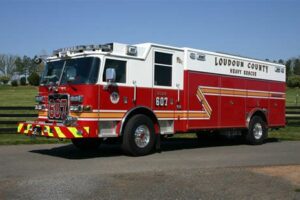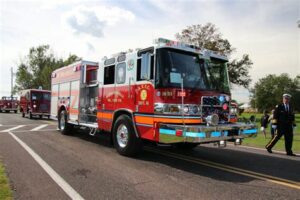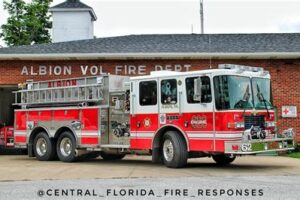Table of Contents
Looking to establish a volunteer fire department? Discover step-by-step guidelines on how to start a volunteer fire department, including recruiting members, securing funding, obtaining equipment, and training volunteers. Learn the essential aspects of forming a successful fire department dedicated to serving your community.
Are you passionate about serving your community and saving lives? Do you dream of becoming a firefighter, but don’t have the opportunity to join an established department? Starting your own volunteer fire department might just be the answer you’re looking for. Transitioning from a concerned citizen to a fully operational fire department is no small feat, but with dedication, planning, and the right resources, it is certainly achievable. In this guide, we will walk you through the essential steps and considerations necessary to establish your very own volunteer fire department, allowing you to make a real difference in your community.
Introduction
Starting a volunteer fire department can be a noble and fulfilling endeavor. It allows community members to come together, serve their neighbors, and contribute to the safety and well-being of their town or city. While establishing a volunteer fire department may seem like a daunting task, with careful planning, dedication, and support, it can be achieved successfully.
Assessing the Need
The first step in starting a volunteer fire department is to assess the need within your community. Research the current fire protection services available, the response times, and any gaps in coverage. Determine if there is a demand for additional emergency services and gauge community support for a volunteer fire department.
Building a Team
Gather a group of dedicated individuals who are willing to commit their time and energy to the establishment of a volunteer fire department. Look for individuals with a range of skills, including firefighting experience, administrative abilities, and community connections. This team will form the foundation of your department and help drive its success.
Developing a Business Plan
Create a comprehensive business plan that outlines your department’s goals, objectives, and strategies for achieving them. Include details on funding sources, equipment needs, training requirements, and community outreach initiatives. A well-thought-out business plan will serve as a roadmap to guide your department’s growth and development.
Securing Funding
Explore various funding options available for your volunteer fire department. This may include applying for grants, seeking donations from local businesses or community organizations, and organizing fundraising events. Additionally, consider approaching local government officials to discuss potential financial support or partnerships.
Training and Certification
Ensure that all members of your volunteer fire department receive proper training and certification. Contact your state’s fire marshal office or equivalent authority to understand the requirements for volunteer firefighters. Develop a training program that covers essential firefighting techniques, emergency medical skills, and safety protocols.
Acquiring Equipment and Apparatus
Obtain the necessary firefighting equipment and apparatus to effectively respond to emergencies. This may include fire trucks, hoses, breathing apparatus, protective gear, and first aid supplies. Explore options such as purchasing new equipment, obtaining donations, or considering lease agreements with nearby fire departments.
Establishing Mutual Aid Agreements
Forge relationships with neighboring fire departments and emergency service providers by establishing mutual aid agreements. These agreements allow for collaboration and assistance during large-scale emergencies or when additional resources are needed. Mutual aid agreements ensure that your volunteer fire department is not isolated and can rely on support from nearby agencies.
Engaging the Community
Develop a community outreach program to educate and engage residents about fire safety, prevention, and the services your volunteer fire department provides. Offer public education sessions, participate in local events, and maintain an active presence on social media. Building strong relationships with the community will foster support and encourage recruitment of new volunteers.
Official Recognition and Accreditation
Seek official recognition and accreditation for your volunteer fire department. Contact your state’s fire marshal office or equivalent authority to understand the requirements and process for obtaining official recognition. This recognition ensures that your department meets specific standards and can access additional resources and training opportunities.
In Conclusion
Starting a volunteer fire department requires careful planning, dedicated individuals, and community support. By following these steps, you can lay a solid foundation for your department’s success. Remember, the primary goal is to serve and protect your community, and with passion and determination, you can establish a volunteer fire department that makes a significant difference in the lives of others.
How To Start a Volunteer Fire Department: A Comprehensive Guide
Subheading 1: Understanding the Importance of Volunteer Fire Departments
Volunteer fire departments play a crucial role in ensuring the safety and well-being of communities. These departments provide prompt emergency response and assistance when professional services may be limited or stretched thin. When disaster strikes, such as fires, accidents, or natural disasters, volunteer firefighters are often the first to arrive on the scene, offering immediate aid and support.
Subheading 2: Assessing the Need and Identifying the Locality
Before embarking on the journey of starting a volunteer fire department, it is essential to evaluate the current emergency services available in your area and identify any gaps or inadequacies. By conducting a comprehensive needs assessment, you can determine the potential demand for a volunteer fire department and the specific requirements it would need to address. This assessment should include an analysis of response times, coverage areas, and the availability of trained personnel.
Subheading 3: Garnering Community Support and Building a Team
A successful volunteer fire department relies heavily on the support and involvement of the local community. To garner community support, organize public meetings and create awareness campaigns to rally enthusiasm. Engage with local organizations, businesses, and schools to build partnerships and spread the word. Additionally, recruit dedicated volunteers who possess skills such as firefighting, emergency medical services, and administrative expertise. Building a diverse and committed team is vital to the success of your department.
Subheading 4: Establishing Legal Framework and Funding
To ensure the smooth functioning of a volunteer fire department, it is crucial to establish a legal framework by incorporating the department as a nonprofit organization or working in collaboration with a local government. Seek legal advice to understand the requirements and obligations associated with your chosen structure. This segment also explores various funding sources available for volunteer fire departments, such as grants, fundraisers, donations, and possible partnerships with local businesses. A well-planned and sustainable funding strategy is essential to support the operations and growth of your department.
Subheading 5: Securing Essential Equipment and Facilities
Equipping your volunteer fire department with suitable firefighting gear, vehicles, and equipment is an integral part of its establishment. Research and compare different suppliers to find affordable options. Collaborate with neighboring departments to share resources and optimize costs. Additionally, secure training facilities or negotiate access to existing facilities in your locality. Having the necessary equipment and facilities ensures that your department is prepared to respond effectively to emergencies.
Subheading 6: Training and Certification of Volunteers
To function efficiently, every volunteer firefighter must undergo comprehensive training and receive certifications relevant to their roles and responsibilities. Research and identify training programs offered by reputable organizations or local fire academies. Emphasize the importance of ongoing education to maintain a highly skilled and motivated team. Continuously evaluate and update your training program to meet industry standards and address emerging challenges.
Subheading 7: Developing Standard Operating Procedures and Emergency Response Plans
Creating well-defined standard operating procedures and emergency response plans is of paramount importance for any fire department. Develop protocols for dispatch systems, mutual aid agreements, incident command systems, and safety protocols. These protocols should be regularly reviewed, updated, and communicated to all members of your department. By having clear and efficient procedures in place, you can streamline your department’s operations effectively.
Subheading 8: Fostering Continuous Improvement and Community Engagement
A volunteer fire department should constantly strive for growth, improvement, and community engagement. Conduct regular drills and simulations to ensure that your team remains prepared for various emergency scenarios. Evaluate your department’s performance and identify areas for improvement. Foster open communication with the community, seeking feedback and involving them in decision-making processes. By continuously striving for excellence and engaging with the community, your volunteer fire department will build trust and remain responsive to changing needs.
By following this comprehensive guide on how to start a volunteer fire department, you’ll be on your way to establishing a critical community resource that ensures the safety and well-being of those in need. Remember, dedication, perseverance, community engagement, and ongoing training are key to successfully operating a volunteer fire department.
A volunteer fire department plays a crucial role in ensuring the safety and well-being of a community. It relies on the dedication and selflessness of individuals who are willing to put their lives on the line to protect others. If you are considering starting a volunteer fire department in your area, here is a step-by-step guide to help you kickstart this noble endeavor:
1. Assess the Need:
Before diving into establishing a volunteer fire department, it is essential to assess the need for such a service in your community. Research the current emergency response capabilities, analyze response times, and identify any gaps that may exist.
2. Garner Support:
To successfully launch a volunteer fire department, you will need to gain support from various stakeholders. Engage with community leaders, local government officials, and residents to discuss the importance of having a dedicated fire department and garner their support for your initiative.
3. Develop a Plan:
Create a comprehensive plan that outlines the structure, objectives, and operational procedures of your volunteer fire department. This plan should include details about recruitment, training, equipment procurement, and establishing partnerships with neighboring fire departments for mutual aid.
4. Recruit Volunteers:
Recruiting committed and passionate individuals is key to the success of your volunteer fire department. Reach out to community members, advertise through local channels, and host information sessions to attract potential volunteers. Emphasize the importance of training, dedication, and teamwork in firefighting.
5. Training and Certification:
Ensure that all volunteers undergo proper training and certification to handle emergency situations effectively. Collaborate with certified trainers or nearby fire departments to provide comprehensive training programs that cover fire suppression techniques, first aid, search and rescue operations, and other essential skills.
6. Acquire Equipment and Resources:
Securing the necessary firefighting equipment and resources is vital for your volunteer fire department’s functionality. Seek funding through grants, community fundraisers, and partnerships with local businesses or government agencies to acquire firefighting gear, vehicles, communication systems, and other necessary tools.
7. Establish Protocols and Standard Operating Procedures:
Develop clear protocols and standard operating procedures (SOPs) that outline how your volunteer fire department will respond to emergencies. These SOPs should cover dispatch procedures, incident command structure, communication protocols, and coordination with other emergency services.
8. Foster Community Engagement:
Engage with the community through regular outreach programs, public education campaigns, and participation in local events. Foster a sense of trust and collaboration between your volunteer fire department and the community it serves, as this will be crucial for long-term success.
9. Continual Evaluation and Improvement:
Regularly evaluate the performance of your volunteer fire department and identify areas for improvement. Seek feedback from volunteers, residents, and other stakeholders to enhance operational efficiency, training programs, and community engagement efforts.
10. Maintain Sustainability:
Ensure the sustainability of your volunteer fire department by establishing a reliable funding mechanism. Explore options such as grants, donations, fundraising events, and partnerships to ensure the financial stability required to maintain equipment, provide ongoing training, and support day-to-day operations.
By following these steps, you can lay the foundation for a successful volunteer fire department that will serve as a vital lifeline for your community in times of crisis. Remember, the dedication and commitment of volunteers are at the heart of any fire department, making it a truly remarkable and selfless endeavor.
Thank you for taking the time to read this article on how to start a volunteer fire department. We hope that the information provided has been insightful and helpful for those interested in taking up this noble endeavor. Starting a volunteer fire department is no small feat, but with the right planning, dedication, and support from the community, it can be a rewarding and life-saving experience.
First and foremost, it is crucial to gather a committed group of individuals who share the same passion for firefighting and community service. Building a team of volunteers who are willing to undergo training, sacrifice their time, and work together harmoniously is the foundation of any successful fire department. Transitioning smoothly into an operational unit requires establishing clear roles and responsibilities, as well as fostering a strong sense of camaraderie among team members.
Once your team is formed, it is essential to establish a solid organizational structure and develop a strategic plan. This involves determining the department’s goals and objectives, creating standard operating procedures, and setting up a chain of command. Conducting a thorough risk assessment of the area you will serve is also crucial for devising effective emergency response strategies and ensuring the safety of both firefighters and the community.
Furthermore, gaining the support of the community is paramount in starting a volunteer fire department. Engaging in outreach activities, such as hosting public meetings, participating in local events, and educating the community about fire safety, can help build trust and garner support. Fundraising efforts are also necessary to acquire the essential equipment, apparatus, and training resources needed for the department’s operation.
In conclusion, starting a volunteer fire department requires dedication, teamwork, and community involvement. By assembling a committed team, developing a strategic plan, and engaging with the community, you can lay the groundwork for a successful department that serves and protects its community. Remember, the journey may not always be easy, but the impact you make as a volunteer firefighter will undoubtedly be invaluable. We encourage you to take the first step towards making a difference today.
.
People Also Ask About How To Start A Volunteer Fire Department:
What is the process of starting a volunteer fire department?
Starting a volunteer fire department involves several important steps:
- 1. Assess the need: Determine if there is a need for a volunteer fire department in your community. Evaluate the current firefighting services available and identify any gaps.
- 2. Gather support: Seek support from local residents, businesses, and government officials who are interested in establishing a volunteer fire department. Create a core group of dedicated individuals who will be actively involved in the process.
- 3. Develop a plan: Create a comprehensive business plan that outlines the goals, objectives, and operational structure of the volunteer fire department. This plan should include details about recruitment, training, equipment acquisition, and funding sources.
- 4. Obtain necessary approvals: Consult with local government authorities to understand the legal requirements and obtain any necessary permits or licenses for operating a volunteer fire department.
- 5. Recruit and train volunteers: Advertise volunteer opportunities and recruit individuals who are passionate about firefighting and community service. Provide them with proper training through certified programs to ensure they are equipped with the necessary skills.
- 6. Acquire equipment and resources: Secure funding through grants, donations, or fundraising efforts to acquire essential firefighting equipment, such as fire trucks, protective gear, and communication systems.
- 7. Establish partnerships: Forge partnerships with neighboring fire departments, emergency services, and community organizations to enhance mutual aid and support during emergencies.
- 8. Promote community engagement: Organize public awareness campaigns, conduct fire safety programs, and actively participate in community events to engage the public and foster a strong relationship between the volunteer fire department and the community.
What are the challenges of starting a volunteer fire department?
Starting a volunteer fire department can present various challenges:
- 1. Limited resources: Obtaining sufficient funding to purchase firefighting equipment, maintain facilities, and provide training can be a significant challenge for volunteer fire departments.
- 2. Recruitment and retention: Attracting dedicated volunteers and retaining them over the long term can be challenging due to the demanding nature of firefighting and the time commitment required.
- 3. Training requirements: Ensuring that volunteers receive proper training while balancing their other responsibilities can be a logistical challenge. Access to certified training programs may also be limited in some areas.
- 4. Building community trust: Gaining the trust and support of the community can be challenging, particularly if there are existing fire services or skepticism about the capabilities of a volunteer fire department.
- 5. Legal and regulatory considerations: Navigating through the legal requirements, permits, and regulations associated with establishing and operating a volunteer fire department can be complex.
How can a volunteer fire department secure funding?
A volunteer fire department can secure funding through various means:
- 1. Grants: Seek out grants offered by government agencies, corporations, and nonprofit organizations that support firefighting and emergency services.
- 2. Donations: Reach out to local businesses, community members, and philanthropic individuals to request financial contributions or in-kind donations of equipment or services.
- 3. Fundraising events: Organize fundraising events such as dinners, auctions, car washes, or community festivals to generate funds for the volunteer fire department.
- 4. Partnerships and sponsorships: Establish partnerships with local businesses or organizations that are willing to provide financial support or sponsor specific initiatives of the volunteer fire department.
- 5. Government funding: Explore opportunities for receiving funding from local government entities or applying for grants specifically available to volunteer fire departments.
What training is required for volunteer firefighters?
Volunteer firefighters typically undergo comprehensive training to ensure they are prepared for emergencies. The required training may include:
- 1. Firefighter basic training: This training covers essential firefighting skills, such as fire suppression techniques, search and rescue operations, handling hazardous materials, and basic emergency medical procedures.
- 2. CPR and first aid: Volunteers often receive training in cardiopulmonary resuscitation (CPR) and basic first aid to provide immediate medical assistance at emergency scenes.
- 3. Incident command system: Understanding the incident command system allows volunteers to effectively communicate and coordinate their actions during emergency situations.
- 4. Ongoing professional development: Continuous training is necessary to keep volunteers updated on the latest firefighting techniques, equipment operation, and safety protocols.






